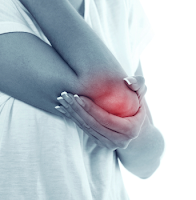What is Eczema?
Eczema (also known as atopic dermatitis) is a chronic,
recurrent skin disease that commonly occurs in early childhood but can continue
or start in adulthood. Like other allergies and asthma, atopic dermatitis tends
to run in families.
What are the Symptoms of Eczema?
Eczema typically begins as an itch that when scratched,
erupts into a rash. The rash may occur anywhere on the body, although certain
areas of the body are more common depending on the age of the person. Eczema
initially appears as small red bumps, or vesicles, which can ooze or flake with
continued scratching. As the skin continues to be scratched, it will appear
leathery, or lichenified.
Where Does Eczema Occur on the Body?
The location of eczema on the body depends upon the age of
the person. In infants and very young children, eczema most often involves the
face, chest, and back of the scalp, since these are the areas where the child
is able to scratch. Eczema doesn’t usually occur in the diaper region, unless
the child is able to scratch there.
In older children and adults, the location of eczema often
involves the skin in the bend of the elbows and behind the knees, since these
flexural areas are the most easily scratched. Eczema can also involve the face,
eyelids, and may be limited to the palms of the hands and soles of the feet,
particularly in adults.
Do Skin Infections Occur More Frequently in People with
Eczema?
In people with eczema, the immune system is more focused on
allergies than fighting infections. This means that the skin has less
infection-fighting chemicals, giving various bacteria, fungi and viruses a
better chance of growing on or infecting the skin.
Colonization and infection of the skin by Staphylococcus
aureus bacteria can worsen eczema, and treatment with antibiotics may help
improve the eczema. Fungal infections, such asringworm, are more common in
people with eczema, especially if topical corticosteroid creams are used
frequently. Viral infections are also more common in people with eczema, such
as herpes infections andmolluscum contagiosum.
People with recurrent bacterial skin colonization and/or
infection can improve their eczema symptoms with the use of bleach baths.
How is Eczema Treated?
Eliminating
the triggers: Avoiding the triggers of itching should be the first priority for
people with eczema. Avoid wearing clothing that can irritate the skin, such as
wool, nylon and other synthetic material. Cotton clothing should be worn, and
washed with a mild detergent and a double-rinse cycle. The use of fabric
softeners should be avoided.
While cautious sun exposure can be helpful for eczema,
over-exposure to the sun, resulting in sunburn, should be avoided. Therefore,
sunscreen should be applied liberally to the skin before any prolonged sun
exposure.
People with significant eczema should be evaluated for
allergic triggers with allergy testing. Pet dander and house dust mites are
environmental allergens that frequently worsen eczema, and common food
allergies can worsen eczema, particularly in children.
Maintaining
good skin care: Good skin care starts with adequate moisturizing and hydration,
which decreases itching and formation of eczema. Hydration of the skin is
maintained with the daily application of skin moisturizing creams. Bathing can
be helpful if done in the correct manner –- daily soaking in a warm water bath,
followed by the immediate application of a moisturizing cream from head to toe
while the skin is still moist.
Medications for Eczema
Oral
Antihistamines: Itching may be at least partially controlled with the use of
low-sedating antihistamines during the day, or with sedating antihistamines,
such as Benadryl (diphenhydramine) at night. It is controversial whether
antihistamines are helpful for the treatment of eczema.
Topical
Steroids: These medications are the first-line therapy for atopic dermatitis,
and are available in lotions, creams, ointments and foams or solutions (for the
scalp). Topical steroids are available in over-the-counter and prescription
strengths. In general, medications in ointment forms are stronger than cream
forms, which are stronger than lotion forms. Side effects, such as thinning of
the skin, bruising and blood vessel formation, can occur with the prolonged use
of high-potency topical steroids.
Non-Steroid
Creams: Topical calcineurin inhibitors, such as Elidel (pimecrolimus) and
Protopic (tacrolimus), are non-steroid, topical medications approved for the
treatment of eczema in adults and children over the age of 2 years. They do not
cause thinning of or pigment changes in the skin, can be used safely on the
face, and can help reduce the amount of topical steroids needed when used for
mild symptoms. However, the FDA has given these medications a black box warning
based on safety concerns.
Systemic
(Oral or Injected) Steroids for Eczema: Rarely, short courses of systemic (oral
or injected) steroids are required to achieve control of a severe flare of
eczema. Extreme caution should be used, as while the eczema typically gets
better on systemic steroids, a “rebound effect” can occur with worsening of the
skin soon after the steroids are stopped. If oral steroids are required, the
dose should be tapered slowly to minimize this risk.
This article was originally published on About.com
 Not all oils are created equal, so when you cook, it helps
to know what to reach for. The amount of antioxidants and healthy fats vary
widely in different types of oils. So, too, do smoking points, which are important,
since cooking at a high temperature with an oil that has a lower smoke point
can produce free radicals and damage the oil's nutrients.
Not all oils are created equal, so when you cook, it helps
to know what to reach for. The amount of antioxidants and healthy fats vary
widely in different types of oils. So, too, do smoking points, which are important,
since cooking at a high temperature with an oil that has a lower smoke point
can produce free radicals and damage the oil's nutrients.



































